| 1 | The cobra family tree |
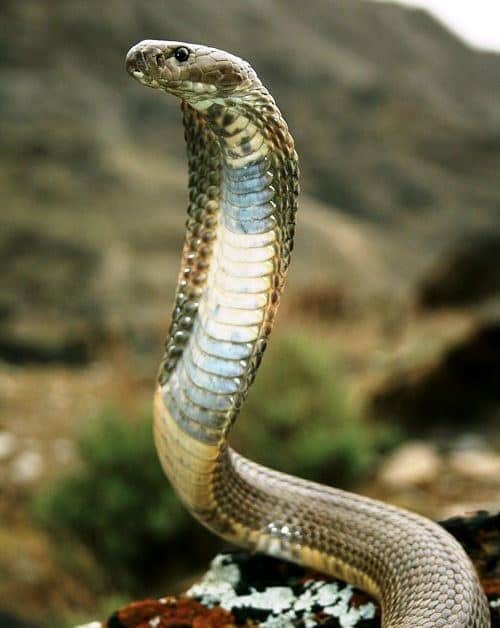
All cobras, with their beady glaring eyes and lethal neurotoxic venom, stem from a common ancestor tens of millions of years ago, but these days there’s over 30 species, and over 10 which can spit. The exact origins remain murky – which mountain ranges trapped which populations, which ice sheets grew and forced them apart. However, we know a fair amount about those surrounding India.
For example, the India cobra (Naja naja) covers virtually all of India and causes hundreds of deaths per year. But in the far northwest of India, you can find the Caspian cobra (Naja oxiana), which lacks the signature hood marking, has an even more dangerously neurotoxic venom, and tends to patrol remote open steppe land. Caspian cobras are actually most closely related to monocled cobras (Thailand) and Andaman cobras, found only on the Andaman islands. They diverged from these two approximately 3.21 million years ago, while those two species diverged from each other 1.81 million years ago.
Despite being so long ago, these 3 cobras still look relatively similar. Evolution is a slow, steady progress. Another divergence happened 6.07 million years ago, when the spitting cobras of southeast Asia, such as the Philippines cobra, split off from the non-spitters like the Caspian and monocled cobras.
| 2 | Bushmasters and the Panama land bridge |
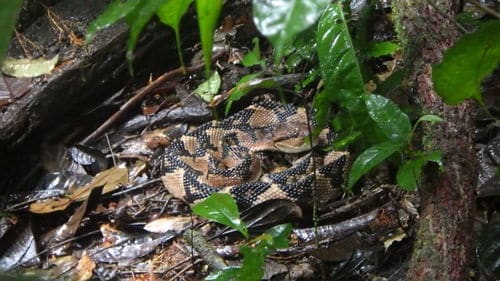
There are 4 bushmaster species in the western hemisphere, the most common being the central American bushmaster and South American bushmaster. While not determined to wipe out every last human being, none are creatures you would want to hug – they can inject 500mg of venom in one bite and have exceptionally long fangs for a venomous snake (2 inches). Subtle physical differences distinguish them, such as the central American form being darker. There’s also the rare black-headed bushmaster, found only in southern Costa Rica in the region of Puntarenas.
Central American bushmasters separated from their common South American counterpart an estimated 6.5-18 millions year ago. Black-headed bushmasters split off from the central 4-11 MYA, while the final species, the Chocoan bushmaster, split from the southern more recently, due to the Andes mountain uplift.
This time we have an incredibly obvious cause: Panama. This thin winding country is the first to submerge whenever the planet enters an exceptionally warm phase, as ice sheets melt and sea levels rise. Life forms are cut off from each other in one continent of the Americas, allowing them to diverge. When millions of years pass and the two are finally reunited, they’re usually too genetically distinct to rebreed, as was the case with central and Chocoan bushmasters, which have an area of overlap in Colombia, but remain separate species. In this case, the two reunited 3.5 million years ago.
| 3 | Scarlet snake deceivers |
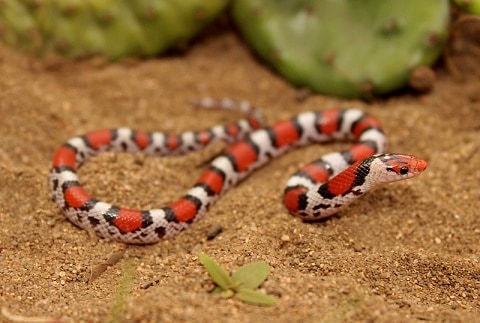
In the two US scarlet snake species, you have a pair which look virtually identical except for one ID sign, yet still diverged 4.86 to 1.37 million years ago.
For reference, modern humans are believed to have existed for 300,000 years. Before then we had Neanderthals, which first appeared 430,000 years ago, preceded by 1.5 million years of Homo erectus, preceded by Homo habilis, preceded by strange ape creatures called Australopithecus, which appeared 4.2 MYA, perhaps more recently than the scarlet snake divergence.
The snakes we’re discussing are the standard scarlet snake (Cemophora coccinea), and the Texas coral snake (Cemophora lineri), which only became an official species in 1991. These two are classic coral snake mimics. In Florida, the scarlet snake is subject to the classic “red touches black, venom lack” rhymes to distinguish them, but scientists eventually found out that the Texan subspecies was independent. They looked virtually identical, except that they were slightly larger than Floridian versions, and had slightly more extensive black markings.
This divergence occurred in the time it took for humanity to go from primitive ape to what we are today. Scientists deduced that following an expansion of ice sheets in North America, one colony of scarlet snakes became trapped in modern day Florida, a warm refuge, while a second group headed to southern Texas. Here they were able to diverge, although most of this divergence was genetic rather than physical.
| 4 | Caribbean island hoppers |
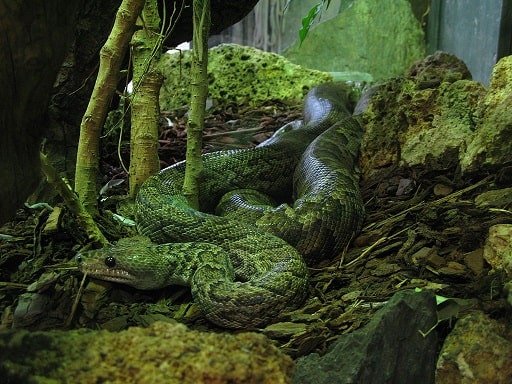
The Caribbean has almost one independent boa species living on each island, trapped by rising sea levels, forcing each one to spiral away and gain subtle differences. They all share similarities, such as crushing constriction tactics and a tendency to enter limestone caves and hunt bats by dangling from stalactites (particularly Puerto Rican boas). Yet most of them diverged an exceedingly long time ago.
The closest three are the dull-looking Hispaniola boa, which peaks at 248.9cm, and its neighbours the Conception Bank boa and Crooked Aklins boa. These are estimated to have diverged just 2.2 million years ago. Yet at the opposite end of the scale, you have the large Cuban boa (max 485.1cm), which is believed to have split from other West Indian boas 16.9-26 million years ago.
We have some of the most data for the gold-coloured Jamaican boa, which is indigenous to its island. This split from the Cuban boa an estimated 17.3 million years ago, and the Haitian vine boa and Haitian ground boa 11.1 MYA, despite those two being its closest living relatives.
| 5 | King cobra |
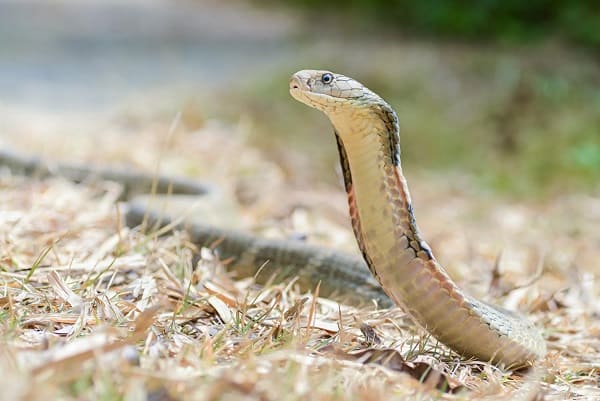
King cobras are not actually the king of cobras: they’re merely a 5.5 metre pretender which hides in the woods and despite its size, is actually less aggressive than most regular cobras.
King cobras are an elapid, but not an official member of the 35+ member Naja cobra genus. They’re the sole member of Ophiophagous, and they diverged from regular cobras far longer ago than you’d expect: an estimated 29 million years ago.
Again, consider than Neanderthals appeared just 400,000 years ago and our ancient ancestors Australopithecus appeared 4.2 MYA. King cobras have nothing to do with their Egyptian or monocled cobra kin. In fact, black mambas are more closely related to real cobras, having diverged 22 million years ago.
Even within king cobras, there’s gigantic genetic divergence, which doesn’t seem to have manifested in physical appearance. There’s 4 separate king cobra clades which are estimated to have split off 3.5-5 MYA. These inhabit the Philippines, India’s western Ghats (an isolated population), Thailand and a huge swathe of southeast Asia, and Indonesia. These are so seperated that may be elevated to full species one day.
| 6 | The coral snake clan |
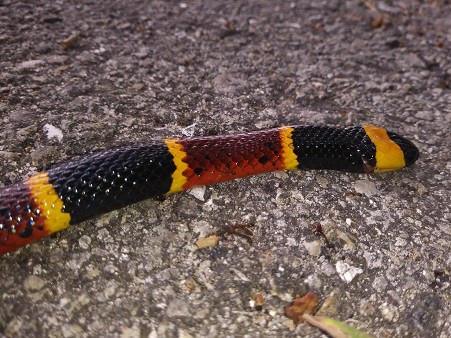
Micrurus, AKA the coral snakes, AKA the American coral snakes, is the most numerous family of venomous snakes on Earth, with at least 83 members as of 2024. Black-red-yellow are their traditional colours, and while some have more striking patterns that allow easy IDs, some are extremely difficult to distinguish.
The two US species are an example. The Texas coral snake (Micrurus tener) and eastern coral snake (Micrurus fulvius) of Florida are so similar that only herpetological experts can tell them apart. They’re believed to have diverged 1.8-0.3 million years ago. Yet the only difference is that in Texas coral snakes, the black neck collar extends slightly further up their head. This is still within the timeframe for the emergence of Neanderthals and their replacement with modern humans.
For the family as a whole, Micrurus is believed to have split off from the tiny Micruroides clan 18 million years ago. The latter has just one member – the weird Arizona coral snake, which has the same outsider position of king cobras against real cobras.
The most water-based coral snake is the aquatic coral snake, found in the Amazon rainforest and sharing space with anacondas and caimans. This is believed to have diverged 10.37MYA. The widespread ribbon coral snake (Micrurus lemniscatus) and Hemprich’s coral snake (Micrurus hemprichii) diverged 9.38MYA.
| 7 | Montpellier snakes separated by seas |
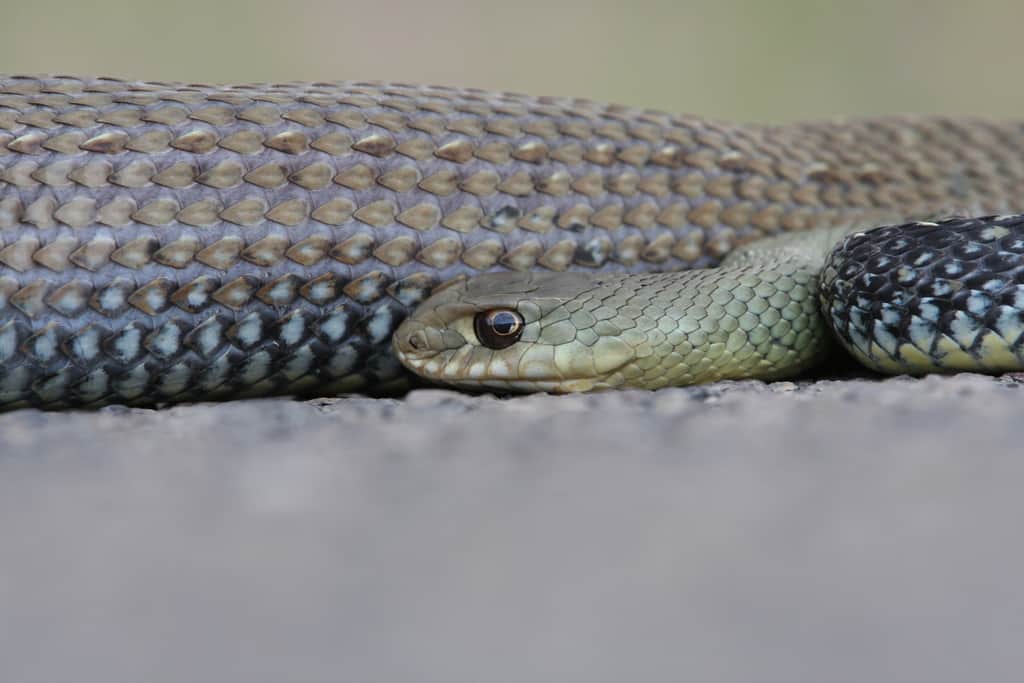
One phenomenon in the world of snake evolution is that many snakes which are abundant in Spain and Portugal are also plentiful in North Africa. This is despite the lack of a land crossing between the two any closer than Egypt. It’s believed that even during recent ice ages, no land bridge existed, as the strait of Gibraltar consists of very deep waters.
For example, one Spanish snake is the Montpellier snake, which reaches 2 metres and is venomous, but with such a small mouth that it cannot kill. 20 years ago, this species was believed to cover the Iberian peninsular, Italy, north Africa, and southeast European countries like Bulgaria.
Yet when scientists conducted genetic analysis, they discovered something strange: those in eastern Europe had separated from Montpellier snakes in Spain an estimated 3.5-6 million years ago. When they analysed those in North Africa, they were far closer, with an estimated divergence time of just 80-170,000 years ago. This was despite the oceanic separation.
Instead of a land bridge, it’s believed that they simply swam. The strait of Gibraltar is 9 miles at its narrow point. The snakes may have been washed away, or even lured by some distant scent. Newcomers could have been lured by the scents of females which had already swam across. Ultimately, the southeast Europe colonies were separated into an all-new species, the eastern Montpellier snake, while the north African versions became a mere subspecies.
| 8 | Sea snakes slowly evolve |
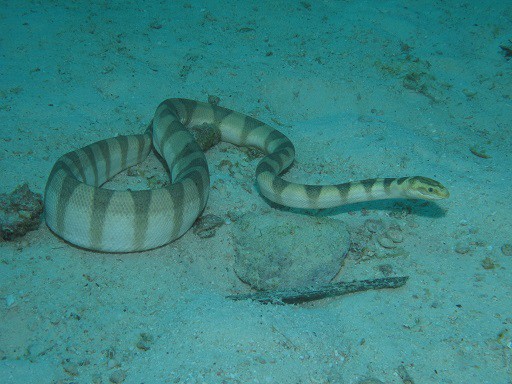
There’s dozens of sea snakes around the world, none in the Atlantic ocean and all in the Pacific and Indian oceans. Most orbit Australia, the heartland of venomous elapid snakes (tiger snakes, brown snakes). All living sea snakes evolved from these elapids, but spiraled into significantly different families. The “true” sea snakes are members of Hydrophis, which spend virtually all their lives in the sea, and never need to stray to dry land, only appearing when washed up. Another common group is Laticauda, the sea kraits, which can spend over a third of their time on dry beaches or rocky coves, resting and digesting meals.
Laticauda is believed to have diverged from traditional Australian elapids 15-25 million years ago. The situation was simple: you can imagine a snake being outcompeted on the crowded land, before making the bold decision to enter the ocean, and gradually adapting over time to fulfil a vacant niche. Meanwhile, Hydrophis diverged from dry land elapids independently, at around 25MYA. Hydrophis and Laticauda didn’t evolve from each other, but became sea snakes completely independently of each other.
Despite the separation occurring earlier, it’s believed that sea snakes only reached their aquatic form 7 million years ago. Some changes are far more recent. The Aipysurus clan, which includes the leaf-scaled sea snake, only came into being less than 3mya, and diverged from Hydrophis about 6 MYA. Within Hydrophis, the slender necked snake snake (Hydrophis melanocephalus) only diverged from annulated sea snakes (H. cyanocinctus) 0.5 million years ago. The beaded sea snake (Aipysurus eydouxii) is believed to have diverged from Aipysurus mosaicus 0.9MYA.
| 9 | Rattlesnake divergences |
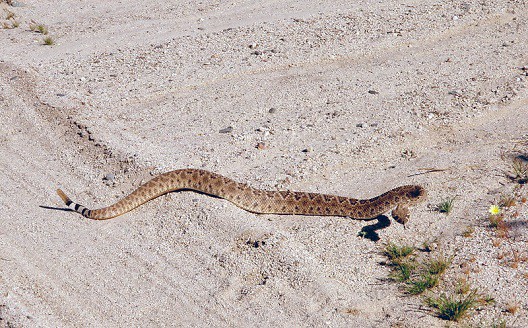
The rattlesnake group has a sprawling, endlessly complex family tree. Many mysteries are still being ironed out, from the Mojave rattlesnakes of parched Arizona deserts, to the prairie rattlesnakes of sweeping buffalo plains.
One fact we know is that among North American vipers, the rattlesnakes (Crotalus) diverged from the Agkistrodon group of cottonmouths and copperheads approximately 14.13 million years ago. Some rattlesnakes which live alongside each other diverged many a long age ago, despite only experts being able to distinguish them. Mojave rattlesnakes and western diamondbacks split approximately 8.55MYA, and the two now have very different venoms, with neurotoxic and haemotoxic powers respectively
Then you have closely related pairs within the rattlesnake world. Red diamond rattlesnakes and west diamondbacks split just 2.99MYA. The prairie and Pacific rattlesnakes split approximately 3.1MYA. This left scientists extremely confused when they examined different populations of the Mojave rattlesnake, and found massive genetic divergences between them, with some in Mexico diverging from US versions 3.4MYA, despite existing under the same species umbrella. Even those in Mojave/Sonora and Chihuahua (Mexico) diverged fairly recently, at 1.45MYA.
West diamondbacks also have division within the species, with the eastern and western populations having separated 0.76–1.75 MYA.
| 10 | Eyelash vipers of Central America |
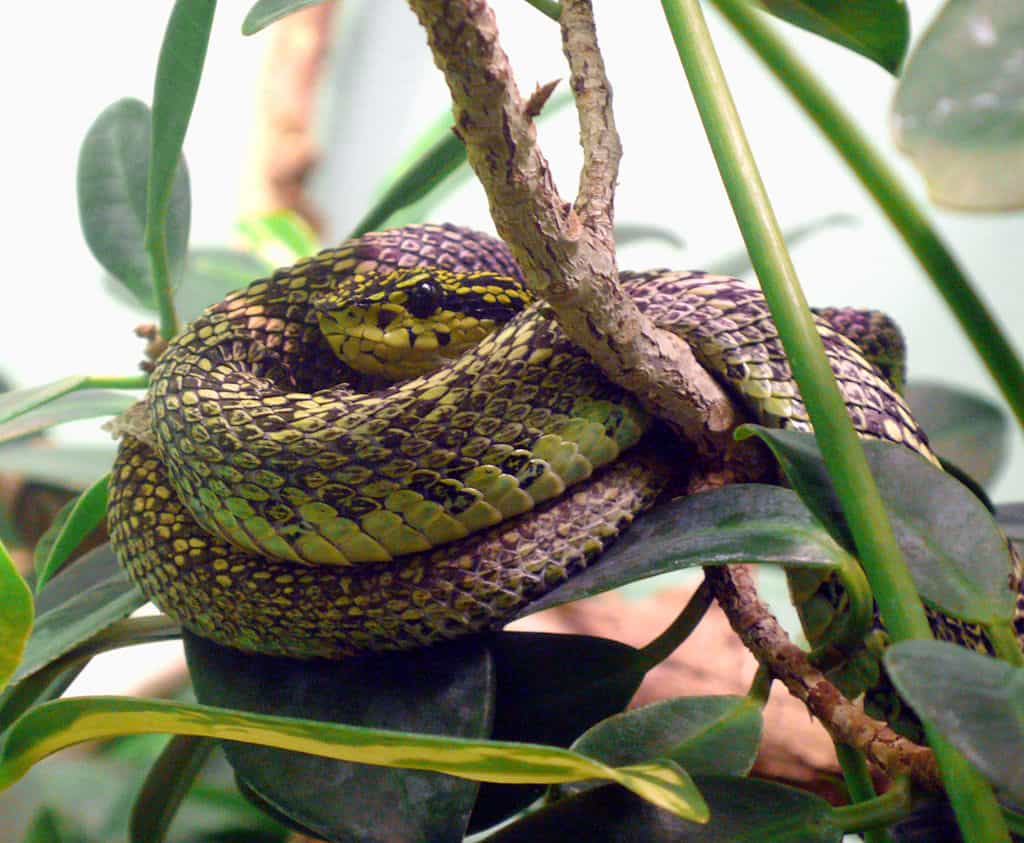
Central America has a couple of rattlesnakes, but they generally shun humid, misty jungles. Instead, Costa Rica, Panama and co. are the realm of the eyelash vipers. Their Bothriechis family has 15+ members and is growing constantly, with several new members added at the beginning of 2024 (including Klebba’s eyelash pitviper).
You can barely step into the central American countryside without an eyelash viper hissing at you from a branch. The high amount of species is mainly caused by the narrow landmass coupled with various towering mountain ranges, not just the Andes, but obscure ones like Costa Rica’s Cordillera Central.
The entire Bothriechis family is believed to have originated 18 million years ago. The earliest to split off were the common eyelash viper (B. schlegelli) and the blotched palm pitvipers, which split off the family tree 10MYA, well before their cousins.
New branches then opened up 7.5MYA, when the unusually dark Bothriechis nubestris and B. nigroviridis found themselves stranded at high elevations in Costa Rican mountain ranges. Eventually, these split from each other about 6 million years ago, occupying different mountains in Costa Rica, with B. nigroviridis gaining a lethal arsenal of neurotoxins.
Other members include Guatemalan eyelash vipers and Rowley’s palm pitviper, found in Guatemala and far southern Mexican mountains, which are believed to have appeared 7-9MYA.
